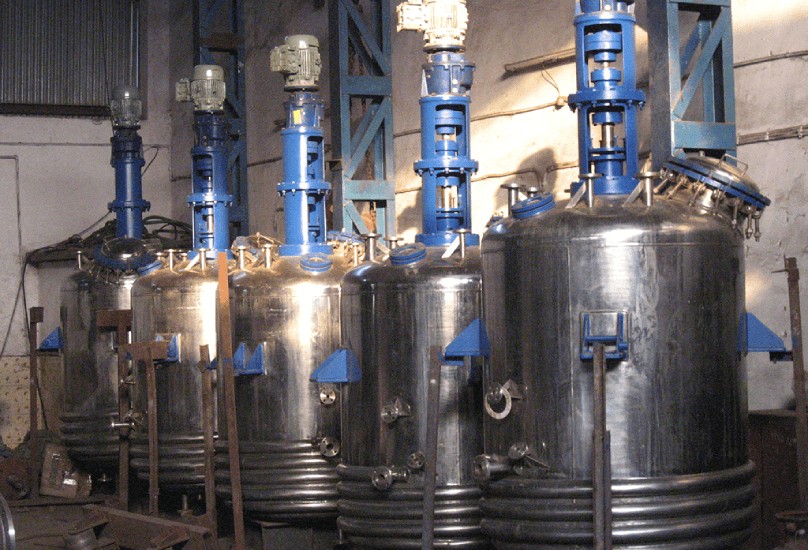A laboratory reactor is an apparatus for carrying outchemical reactions, obtaining a finished product, or for researching and simulating a process under ideal controlled conditions. For laboratories, models are produced based on a modular principle, i.e., they can be easily disassembled and reassembled without the use of tools or specialists. In order for everything to work as a single system, connectors and fasteners are used.
Description
In general, a laboratory reactor consists of: a vessel (with or without a jacket), in which chemical reactions take place, auxiliary and measuring devices. Most often, the following are used as additional equipment:
- overhead stirrer;
- thermostat for heating or cooling the reaction vessel;
- vacuum pump with vacuum gauge;
- thermometer or thermal sensor;
- electronic control unit;
- funnels for loading liquid and solid reagents;
- condenser with a receiving flask.Picking and assembly principle
In prefabricated laboratory reactors, four types of connecting elements are used:
- mounting frame, stands, screw fasteners – are highly durable, usually made of stainless steel and aluminum;
- glass polished elements;
- flexible tubes made of rubber, silicone or PVC;
- electrical cables.
The mounting frame and tripods are used to assemble individual parts into a single structure. Fasteners with screws or bolts support interconnected parts subject to high mechanical stress. Often, such fasteners are provided for the lid and the reaction vessel, the sealing sleeve of the stirrer head, the lid of the loading funnel, the discharge valve, etc.
In glass models, joints on thin sections are widely used. Virtually all auxiliary equipment connects to the reaction vessel through a ground-necked cap. Funnels, cooler, vacuum valve, thermometer is connected using interchangeable cones.
If the size of the sections of the equipment and the neck of the cover do not match, adapters are used: along, bends, transitions, connecting tubes. For example, a thermo sensor is immersed in a container using a connecting tube, a refrigerator is connected through a slot, and the core of a funnel for liquid reagents is inserted directly into the lid sleeve.
The vacuum pump and thermostat are connected to the reactor with flexible hoses. The coolant circulates through them and air is pumped out.
Electric cables are used to connect the electronic control unit to the temperature sensor and the overhead stirrer.
Stainless steel laboratory reactors: description, application
The main feature of the stainless-steel laboratory reactors is the stainless-steel reaction vessel. Due to this, the devices:
- are distinguished by high mechanical strength and durability;
- corrosion resistant;
- have high thermal conductivity;
- safe in work, not afraid of accidental blows and damage;
- suitable for work with high pressures and temperatures, vacuum, explosive and aggressive substances.
Stainless steel laboratory reactors are structurally indistinguishable from similar instruments with a glass reaction flask and glass accessories. The steel is well processed, the device is supplied with threaded collapsible / assembled connections and accessories.
The industry produces models for laboratories:
- volume from 60 ml to 200 l;
- for work under pressure, with vacuum, at normal pressure;
- low-temperature and high-temperature, withstanding t from -80 ° С to +350 ° С;
- with an all-welded or split body (container and lid);
- made of alloyed stainless steel, usually grades AISI 304, AISI 316, AISI 321. Each brand differs from others in resistance to certain reagents and mechanical strength, which should be taken into account when choosing a device;
- with a heat jacket, with built-in internal heat exchangers or without heat exchangers;
- complete with basic (seals, fittings, overhead stirrer with a nozzle and an electric motor) and additional accessories. Additional ones include a mounting frame, an elevator, a drain valve or faucet, a cover and fastener, a temperature sensor, thermal insulation, an electronic control unit, a pressure gauge and a vacuum valve, etc.
Application
Apparatus with a stainless-steel reaction vessel is in demand in:
- research institutions and pilot plants;
- chemical research and chemical analytics;
- pharmaceuticals, since high purity and chemical resistance of surfaces meet the strict requirements of GMP standards for the production of medicines;
- food industry, cosmetics and perfumery industry.
Stalwart International, One of the best Chemical reactor manufacturers in Ankleshwar


























